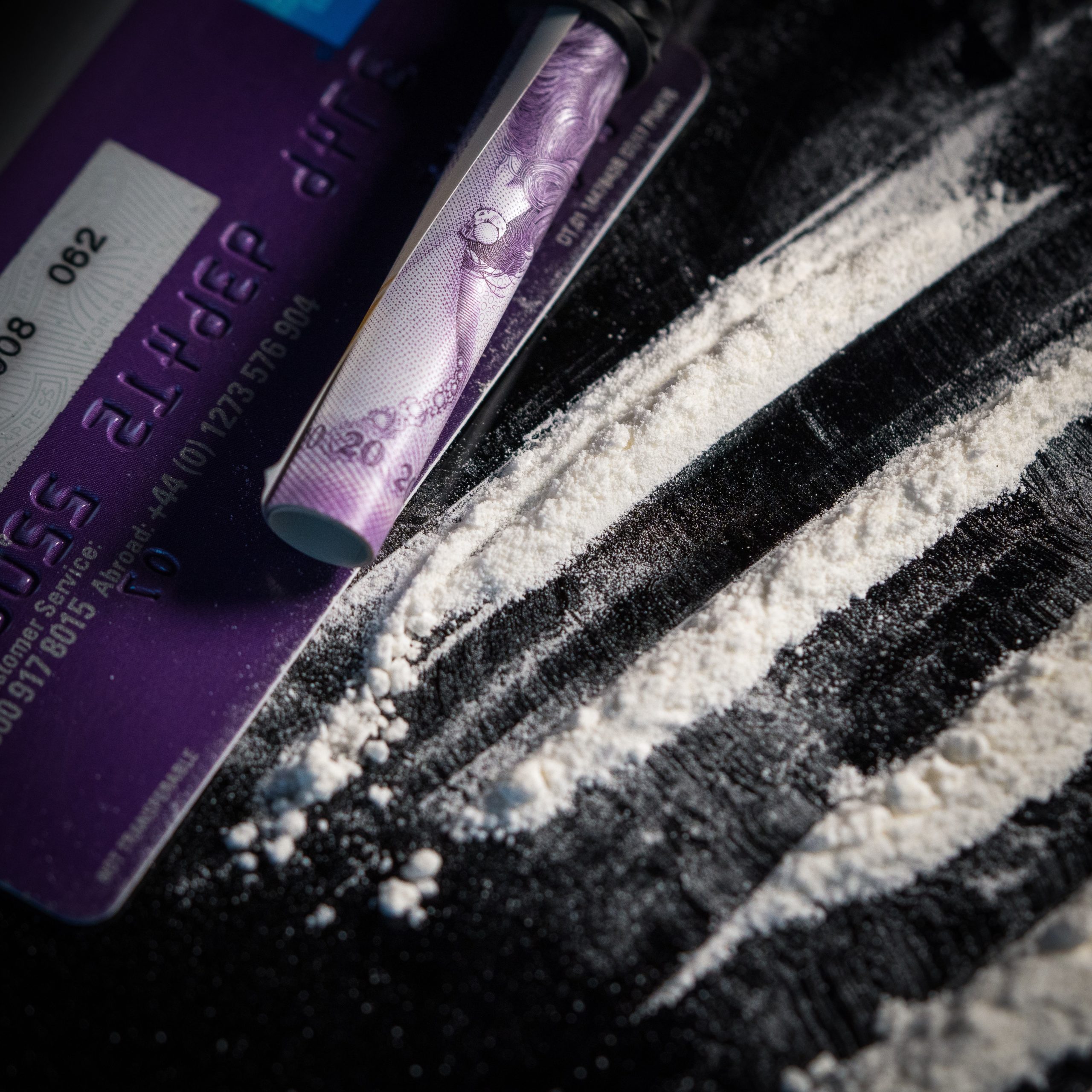What are Illegal Stimulants?
There are both legal and illegal stimulants, and both categories are commonly abused. According to The National Institute on Drug Abuse, in the piece ‘Prescription Stimulants DrugFacts’, the most commonly abused prescription stimulants are medicines generally used to treat attention-deficit hyperactivity disorder (ADHD) and narcolepsy (uncontrollable episodes of deep sleep). They increase alertness, attention, and energy.
The most common prescription stimulants are Dextroamphetamine (Dexedrine®), Dextroamphetamine/Amphetamine combination product (Adderall®), and Methylphenidate (Ritalin®, Concerta®). Some of the most commonly abused illegal stimulants include cocaine and methamphetamine. These kinds of drugs may be taken orally, snorted, or injected.
Sometimes referred to as “uppers,” these drugs are frequently abused due to their performance-enhancing and euphoric effects. Generally, those who abuse stimulants experience heightened energy levels and enhanced focus. Stimulants speed up mental and physical processes, which can produce desirable effects in the short term by increasing levels of dopamine in the brain. While users may feel great due to the short-term effects of stimulants, long-term abuse of these drugs can have significant consequences, which is why it is so important for those who abuse the drugs to get help as quickly as possible.

Cocaine Addiction
Cocaine is a central nervous system stimulant that affects the brain by stimulating high levels of dopamine, a brain chemical associated with pleasure and reward. Over time, Cocaine negatively affects every part of the body with the potential for severe long-term effects. It can cause changes to genetics in brain cells, nerve cells, and proteins, among other permanent effects.
Heroin Addiction
Heroin can be a white or brown powder, or a black sticky substance is known as black tar heroin. This opioid drug is highly addictive because the excessive use of heroin often develops a tolerance. In other words, users will need higher and/or more frequent doses of the drug to get the desired effects. With those effects in mind, a substance use disorder (SUD) may develop when you are suffering from Heroin addiction.
It is when continued use of the drug causes issues, such as health problems and failure to meet responsibilities at work, school, or home. In this case, there is a range of treatments that are effective in helping people stop heroin use. However, heroin addiction treatment plans should be individualized to meet the needs of the patient.
How are Illegal Stimulants Ingested?
Whether legal or illicit, stimulants are usually:
- Swallowed
- Snorted
- Smoked
- Injected
Examples of Illegal Stimulants
The illegal stimulants most commonly used include:
- Cocaine
- Crack
- Amphetamines
- Methamphetamine
- Ecstasy
Continuing with the common thread, cocaine and amphetamines were originally used medicinally. Cocaine was once called the “wonder drug.” But their addictive properties have made both unsafe for use in any situation.
It is important to remember that any prescription drug becomes illegal when:
- Taken in a way other than prescribed
- Taken in a dose other than prescribed
- Taken by anyone other than the prescribed patient
Is Alcohol a Stimulant?
While alcohol may lower inhibitions and make you feel like the life of the party for a time, alcohol is a depressant, making it the opposite of a stimulant. It works by depressing or slowing down the central nervous system —“turning off the brain,” so to speak. The rush of dopamine may make it seem like a stimulant at first, but unlike stimulants, alcohol slows down cognitive functions, reaction times, thought processes, and speech.
The Short-Term Side Effects of Illegal Stimulants
When stimulants are ingested, the receptors of the brain produce dopamine, also referred to as DA. This is the feel-good, euphoric reaction that drives people to use stimulants. But there are very real negative results as well. The immediate short-term effects include:
- Rapid heart rate
- Rise in blood pressure
- Increased body temperature
- Dilation of pupils
- Heightened, yet scattered, awareness
- Nausea
- Loss of appetite
- Wakefulness/disturbed sleep patterns
- Mood swings
- Panic, anxiety, and psychosis
The Long-Term Risks of Illegal Stimulants
Illegal stimulants are extremely addictive. Cocaine is believed to be one of the most addictive substances on the planet. Meth will imprison most after a single use. Long-term effects include:
- Permanent damage to blood vessels
- Kidney, liver, and lung damage
- Destruction of tissue at the site of ingestion (nose if inhaled, or the skin around the injection site)
- Respiratory illness and severe tooth decay if smoked
- Malnutrition
- Infection
- Disorientation, even between uses
- Psychosis
- Brain damage
- Death
Common Street Names for Illegal Stimulants
Stimulants as a drug classification are referred to as “uppers” or “speed.” When it comes to the street names for various uppers, the list is as extensive as it is inventive.
- Ecstasy
- X
- E
- XTC
- Molly
- Rolls
- Hug drug
- Love drug
- Lover’s speed
- Adam
- Eve
- Clarity
- Moon rocks
- Dancing shoes
- Scooby snacks
- Candy
- Peace
- Methamphetamine
- Crystal
- Meth
- Cristy
- Tina
- Crank
- Crissy
- Tweak
- Glass
- Ice
- Shards
- Go
- Whizz
- Chalk
- Cocaine
- Coke
- Blow
- Rock
- Crack
- Yayo
- Snow
- Sniff
- Sneeze
- White
- Nose candy
- Toot
- Line
- Dust
- Flake
- Amphetamines
- Addies
- Beans
- Black beauties
- Pep pills
- Dexies
- Zing
- Study buddies
- Smart pills
Users will also give their drug of choice a common, everyday name, to be able to speak freely about it in front of others. For example, a phone call to a dealer may sound something like this: “Hey, is your Aunt Bernice in town?” The caller is asking if the drug they want, “Aunt Bernice,” is currently available.
Why Are Illegal Stimulants Abused?
Unfortunately, there are several reasons that people turn to illegal stimulants, even beyond getting high. It is not uncommon for people to use cocaine or amphetamines as a means to:
- Be more productive
- Enhance performance
- Lose weight
These drugs can be psychologically addictive because of the valuable “benefits” they provide. For many users, this drug use is driven by a poor self-image. They’re trying to make themselves “better.”
The Negative Effects of Illegal Stimulants
We have already addressed the physical and psychological effects on the stimulant user, but what about the people and community surrounding them? In 2015, amphetamine-related hospital costs reached an astounding $2.17 billion. Stimulant-related offenses account for more than 75% of all federal drug offenses.

In 2016, daily users of cocaine and methamphetamine spent approximately $51 billion to support their habit. There is also the devastating interpersonal cost: relationships ripped asunder; marriages destroyed; lifelong friends becoming strangers; children, spouses, and other loved ones mistreated or neglected. You cannot put a price tag on these costs.
Treatment for Illegal Stimulants Addiction
Continued abuse of any type of stimulant can lead to a stimulant drug addiction. Once addiction has taken hold, professional care is recommended for the best chance at a complete recovery.
Generally, medical detox is recommended for those suffering from long-term stimulant abuse, polysubstance abuse, or co-occurring disorders (when another mental health disorder occurs alongside the addiction). In a professional facility, clients are monitored around the clock while the drugs of abuse are processed out of the body.
If any complications arise, medical professionals can act quickly. In addition, medications may be administered to address specific withdrawal symptoms, such as anti-anxiety or anti-nausea medications, to make the process as comfortable as possible. Supportive care in the form of proper nutrition, hydration, and encouragement is also given.

While detox is an essential first step in addiction recovery, it does not constitute treatment on its own. It must be followed with comprehensive therapy. Behavioral treatment.
- Cognitive Behavioral Therapy (CBT): has seen extensive success in treating cocaine addiction in particular. This short-term treatment approach involves identifying thought patterns that lead to substance abuse and then working to change those thoughts. As a result, behaviors also change. Clients then learn to opt for positive coping mechanisms when triggers to use cocaine or other stimulants arise.
- Contingency Management: a form of therapy that involves rewards, has been shown to be effective in treating stimulant addiction. Clients are given rewards, like vouchers for activities or prizes, for achieving certain milestones, such as a certain number of days sober or attending a specific number of therapy sessions.
- The Matrix Model: is also commonly used to address Stimulant Drug Addiction. In this model, the client and therapist work closely to encourage positive behavior changes and boost the client’s feelings of self-worth. As treatment progresses, clients gain more self-confidence and ultimately realize that they are best able to help themselves once they have the right tools in place.
As with all forms of addiction treatment, care should be customized to fit the individual needs of the client. There is no cookie-cutter approach to recovery that will work for everyone, so those struggling with stimulant abuse should take care to find a treatment program that will address their specific need.
Reclaim Your Life From Illegal Stimulants Addiction
Addiction to Illegal stimulants is a serious condition that can cause major health, social, and economic problems that should not be taken lightly. We Level Up Washington treatment center can provide you, or someone you love, the tools to recover from this with professional and safe treatment. Feel free to call us to speak with one of our counselors. Our specialists know what you are going through. Please know that each call is private and confidential.
We Level Up Washington Mental Health Center: Primary Mental Health Treatment with Secondary Co-Occurring Treatments
The We Level Up Washington primary mental health center stands ready to help. Offering secondary treatment programs for underlying conditions like Illegal stimulant addiction that frequently fuels harmful behaviors. Taking that first step to get the professional support you need can be life-transforming.
We know how mental health disorders and secondary co-occurring substance abuse diagnoses directly affect one another. The We Level Up Washington treatment center provides recovery programs through science-based mental health treatments that can help you feel better. Call us now for a free mental health evaluation!
Inpatient medical detox and residential primary addiction treatment may be available at affiliated facilities at other We Level Up Treatment Centers locations beyond the Washington treatment facility.
Sources
[1] NIDA. 2018. Prescription Stimulants DrugFacts.
[2] NIDA. Intentional vs. Unintentional Overdose Deaths.
[3] U.S. National Library of Medicine – www.nlm.nih.gov
[4] Center for Disease Control and Prevention (CDC) – www.cdc.gov


